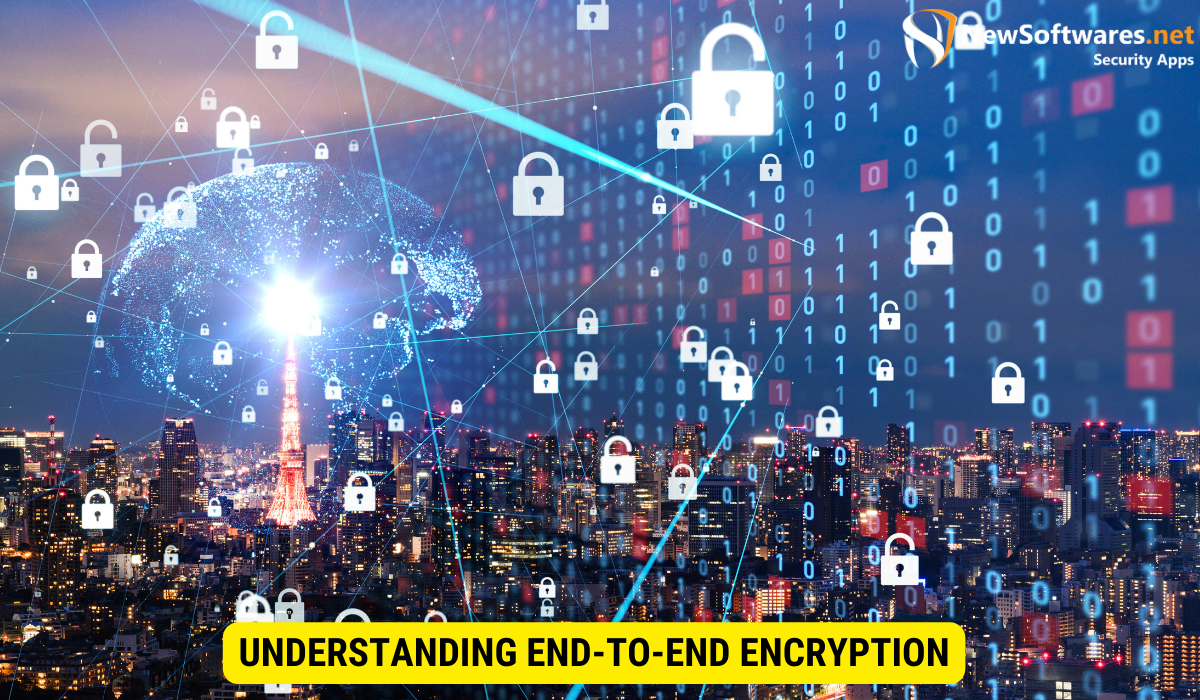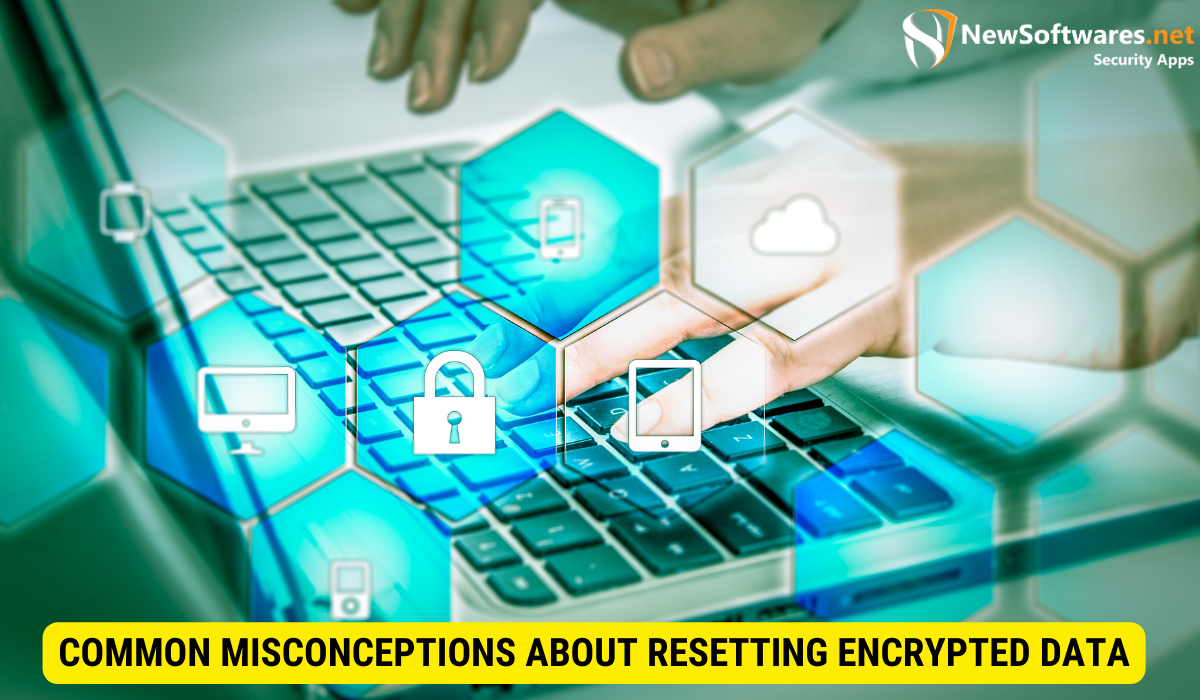Resetting end-to-end encrypted data involves a process to enhance data security. It’s crucial for mitigating breaches, understanding encryption basics, and following best practices
End-to-end encryption is a crucial aspect of data security in the digital age. It ensures that only the sender and intended recipient can access the contents of a message or file. However, there are instances when it becomes necessary to reset end-to-end encrypted data. I will aim to provide complete details on understanding what it means to reset such data, the process involved, implications, best practices, and common misconceptions.
Understanding End-to-End Encryption

Before resetting end-to-end encrypted data, let’s review the basics of encryption. Encryption is encoding information so only authorized parties can decipher it. End-to-end encryption takes this further by ensuring that data remains encrypted throughout its journey from sender to recipient.
When it comes to encryption, various methods and algorithms are used to scramble data into an unreadable form. These algorithms use complex mathematical calculations that transform the original information into a jumbled mess. Without the corresponding encryption key, making sense of the encrypted data would be nearly impossible.
The Basics of Encryption
Encryption relies on complex algorithms to scramble data into unreadable form. The only way to retrieve the original information is by using a unique encryption key that pairs with the algorithm. This ensures that unauthorized individuals cannot make sense of the encrypted data, even if they manage to intercept it.
Imagine you have a top-secret message you want to send your friend. Instead of simply writing the message in plain text, you encrypt it. Using an encryption algorithm, you transform the message into a series of random characters that appear as gibberish to anyone who sees it. Without the encryption key, the message is virtually indecipherable.
Now, let’s say you send the encrypted message to your friend. Along the way, the message might pass through various servers and networks. Without end-to-end encryption, there is a risk that someone could intercept the message and attempt to decrypt it. However, with end-to-end encryption, the message remains encrypted throughout its journey, ensuring that only the intended recipient can decrypt and access the information.
The Role of Encryption Keys

Encryption keys are crucial for end-to-end encryption. Each participant in the communication process possesses a public key for encryption and a private key for decryption. These keys ensure that only the intended recipient can decrypt and access the information. Encryption keys are generated based on robust cryptographic methods, making it highly improbable for unauthorized parties to decipher the encrypted data.
Let’s go back to our example of the encrypted message. When you encrypt the message, you use your friend’s public key to encode it. This key is freely available and can be used to encrypt a message intended for your friend. However, once the message reaches your friend, they use their private key to decrypt it and reveal the original content. The private key is kept secret and known only to your friend, ensuring no one else can access the decrypted message.
Encryption keys play a vital role in maintaining the security and integrity of end-to-end encrypted data. Without the correct keys, even the most determined attacker would find it extremely difficult, if not impossible, to decrypt the information.
The Process of Resetting Encrypted Data
Although end-to-end encryption provides a high level of security, there are situations where it becomes necessary to reset the encrypted data. Resetting encrypted data helps ensure that any potential threats are mitigated, and the data remains secure.
Why Reset Encrypted Data?
There are various reasons why individuals or organizations might need to reset their encrypted data. It could be due to a compromise in encryption keys, suspicion of unauthorized access, or the need to revoke access for certain parties. Resetting the encrypted data helps ensure that any potential threats are mitigated, and the data remains secure.
When a compromise in encryption keys occurs, it is crucial to reset the encrypted data to prevent unauthorized access. Encryption keys are the foundation of secure communication, and any cooperation in their integrity can lead to severe consequences. By resetting the encrypted data, individuals or organizations can regain control over their data and prevent unauthorized parties from accessing it.
Another reason to reset encrypted data is when there is suspicion of unauthorized access. Cyber threats are prevalent in today’s digital landscape, and it is important to take proactive measures to protect sensitive information. By resetting the encrypted data, individuals or organizations can eliminate any potential unauthorized access and keep the data secure.
Furthermore, there may be situations where certain parties need to have their access revoked. This could be due to changes in personnel, termination of contracts, or any other reason that requires limiting access to the encrypted data. By resetting the encrypted data, individuals or organizations can effectively revoke access for these parties and maintain control over their sensitive information.
Steps Involved in Resetting Encrypted Data
Resetting encrypted data involves several steps to ensure a thorough reset and maintain data integrity.
- Assessing the Situation: Determine the reason for the reset and evaluate the potential impact on data security and integrity.
- Generate New Encryption Keys: Create a new set of encryption keys to replace the compromised or outdated ones. This step is crucial to prevent unauthorized access to the data.
- Re-encrypting the Data: Encrypt the data again using the new encryption keys to ensure that only authorized parties can access it.
- Updating Access Controls: Review and update access controls to ensure the right individuals have appropriate permissions to access the reset data.
- Implementing Additional Security Measures: In addition to resetting the encrypted data, it is advisable to implement additional security measures to enhance data protection. This could include strengthening password requirements, implementing multi-factor authentication, or conducting regular security audits.
- Monitoring for Anomalies: After resetting the encrypted data, monitoring the system for any anomalies or suspicious activities is essential. This can be done through intrusion detection systems, log analysis, and real-time monitoring tools. Any potential security breaches can be detected and addressed promptly by actively monitoring the system.
- Regularly Reviewing and Updating Encryption Protocols: Encryption protocols and algorithms evolve over time, and it is vital to stay up-to-date with the latest industry standards. Regularly reviewing and updating encryption protocols ensures that the encrypted data remains secure against emerging threats.
Implications of Resetting Encrypted Data
Resetting encrypted data has significant implications for both data security and integrity. Organizations can proactively enhance their data protection strategies by resetting encrypted data and addressing potential breaches or unauthorized access.
One of the key impacts of resetting encrypted data is improving data security. Organizations can guarantee that only authorized parties can decrypt and access the data by resetting the encryption. This provides an additional layer of security, giving organizations peace of mind and maintaining the confidentiality of their sensitive information.
Moreover, resetting encrypted data can also have an effect on data integrity. When the reset process involves re-encrypting the data, there is a possibility of introducing errors or compromising the integrity of the information. However, with proper precautions and robust encryption algorithms, the chances of data integrity issues are minimized.
Organizations can further mitigate potential risks to data integrity by implementing regular backups. By having a backup system in place, organizations can ensure that in the event of any data integrity issues during the reset process, they can easily restore the data to its original state.
It is worth noting that the implications of resetting encrypted data may vary depending on the specific encryption methods and algorithms used. Organizations must carefully assess and evaluate their encryption protocols to ensure that the reset process aligns with their security requirements and does not introduce any vulnerabilities.
In conclusion, resetting encrypted data has positive and potentially negative implications for data security and integrity. While it enhances data security by addressing breaches and unauthorized access, organizations must be cautious about the impact on data integrity and take necessary precautions to mitigate any risks.
Best Practices for Resetting Encrypted Data
When resetting encrypted data, following best practices can help ensure a successful reset without compromising security or integrity.
Precautions to Take Before Resetting
Before resetting encrypted data, it is advisable to perform thorough backups to avoid data loss. Additionally, inform and educate all relevant parties about the reset process to minimize disruptions and ensure a smooth transition.
Ensuring a Successful Reset
Ensure that the new encryption keys are strong and unique. Regularly update and review access controls to prevent unauthorized access. Test the reset process with a limited data set to identify potential issues before executing the reset on a larger scale.
Common Misconceptions about Resetting Encrypted Data

Resetting encrypted data is surrounded by various misconceptions that often lead to concerns or hesitation when considering a reset.
Debunking Myths about Data Loss
One common misconception is that resetting encrypted data automatically results in data loss. However, by following proper backup procedures and taking necessary precautions, the risk of data loss can be minimized or eliminated entirely.
Clarifying Misunderstandings about Security Risks
Some may fear resetting encrypted data exposes vulnerabilities or potential security risks. In reality, resetting encrypted data is a proactive measure to mitigate security risks and strengthen data protection.
Key Takeaways
- End-to-End Encryption Basics: It ensures data remains encrypted from sender to recipient using encryption keys.
- Why Reset Encrypted Data: Compromised keys, suspicion of unauthorized access, or the need to revoke access can necessitate resetting.
- Steps in Resetting: Assessment, new key generation, re-encryption, access control updates, and security measures are involved.
- Implications: Resetting enhances data security but may impact data integrity, mitigated with backups and precautions.
- Best Practices: Backup data, use strong keys, update access controls, test the reset process, and debunk common misconceptions.
FAQs
What is end-to-end encryption?
End-to-end encryption ensures only the sender and recipient can access the content of a message or file.
Why is it necessary to reset encrypted data?
Resetting is vital if encryption keys are compromised, unauthorized access is suspected, or access needs to be revoked.
What are the steps to reset encrypted data?
The process involves assessing the situation, generating new encryption keys, re-encrypting data, updating access controls, and implementing security measures.
What are the implications of resetting encrypted data?
Resetting improves data security and may affect data integrity, but precautions can mitigate risks.
What are the best practices for resetting encrypted data?
Best practices include backups, strong encryption keys, regular access control updates, and testing the reset process.
Conclusion
In conclusion, resetting end-to-end encrypted data is essential in ensuring data security and integrity. By understanding the basics of encryption, the importance of encryption keys, and the steps involved in resetting, individuals and organizations can maintain high data protection. Adhering to best practices and debunking common misconceptions ensures a successful reset without compromising the confidentiality and integrity of sensitive information.
